VERY SCARCE! American VIII Bomber Command LONDON-BERLIN H2X-Equipped B-17 1944 WWII Radar Plotting Chart - 100th Bomb Group B-17 Navigator Bomb Raid Mission Map
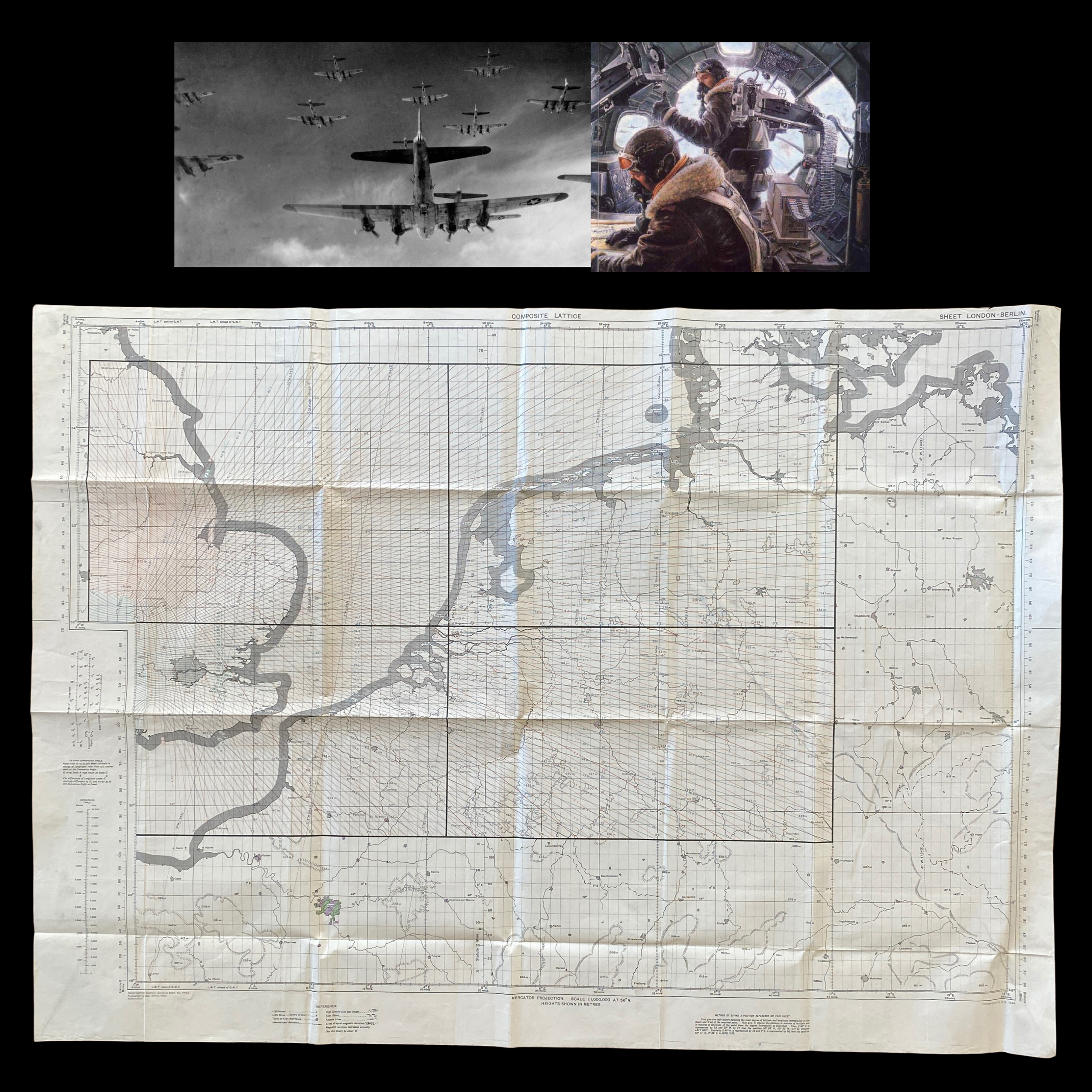
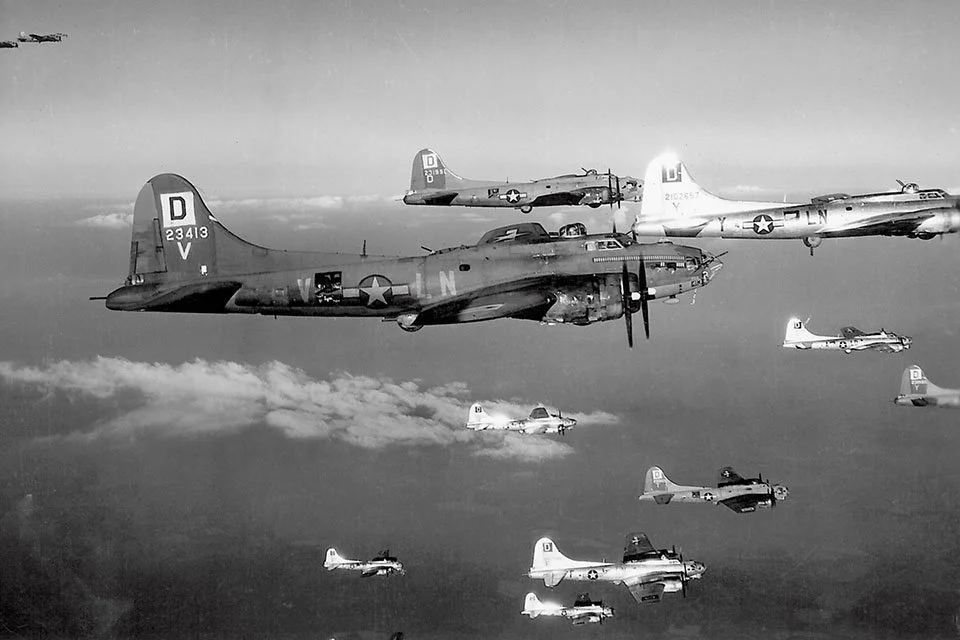

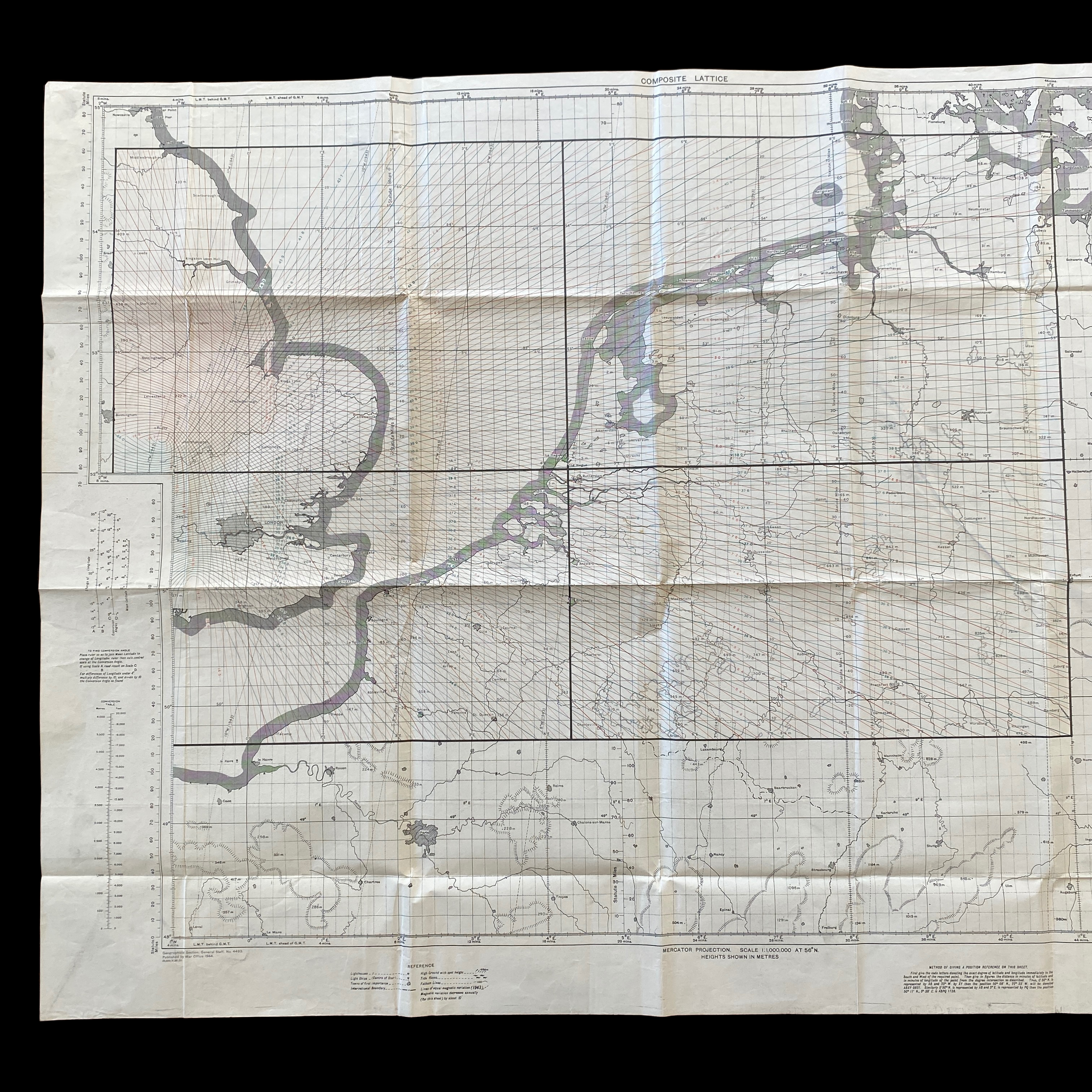
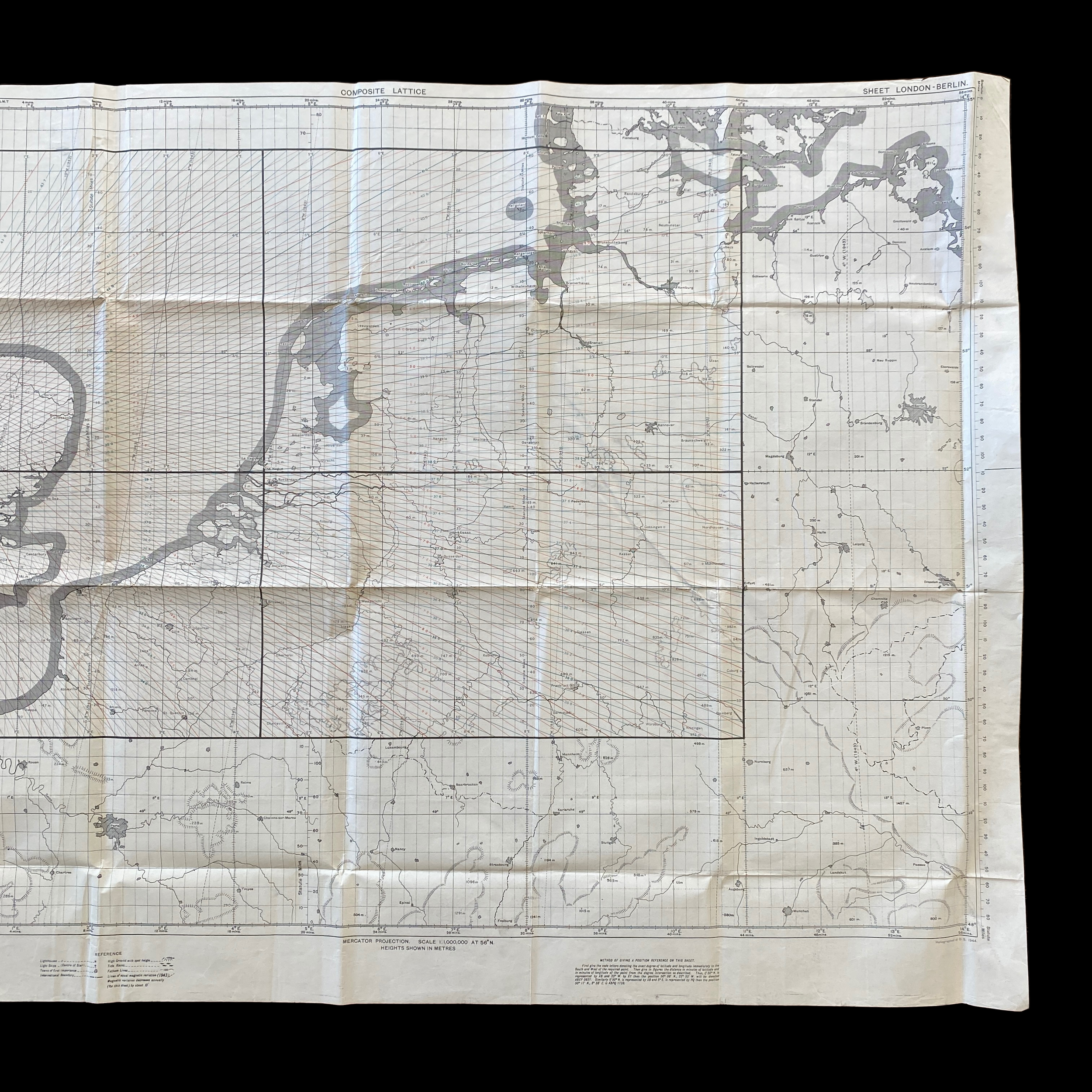
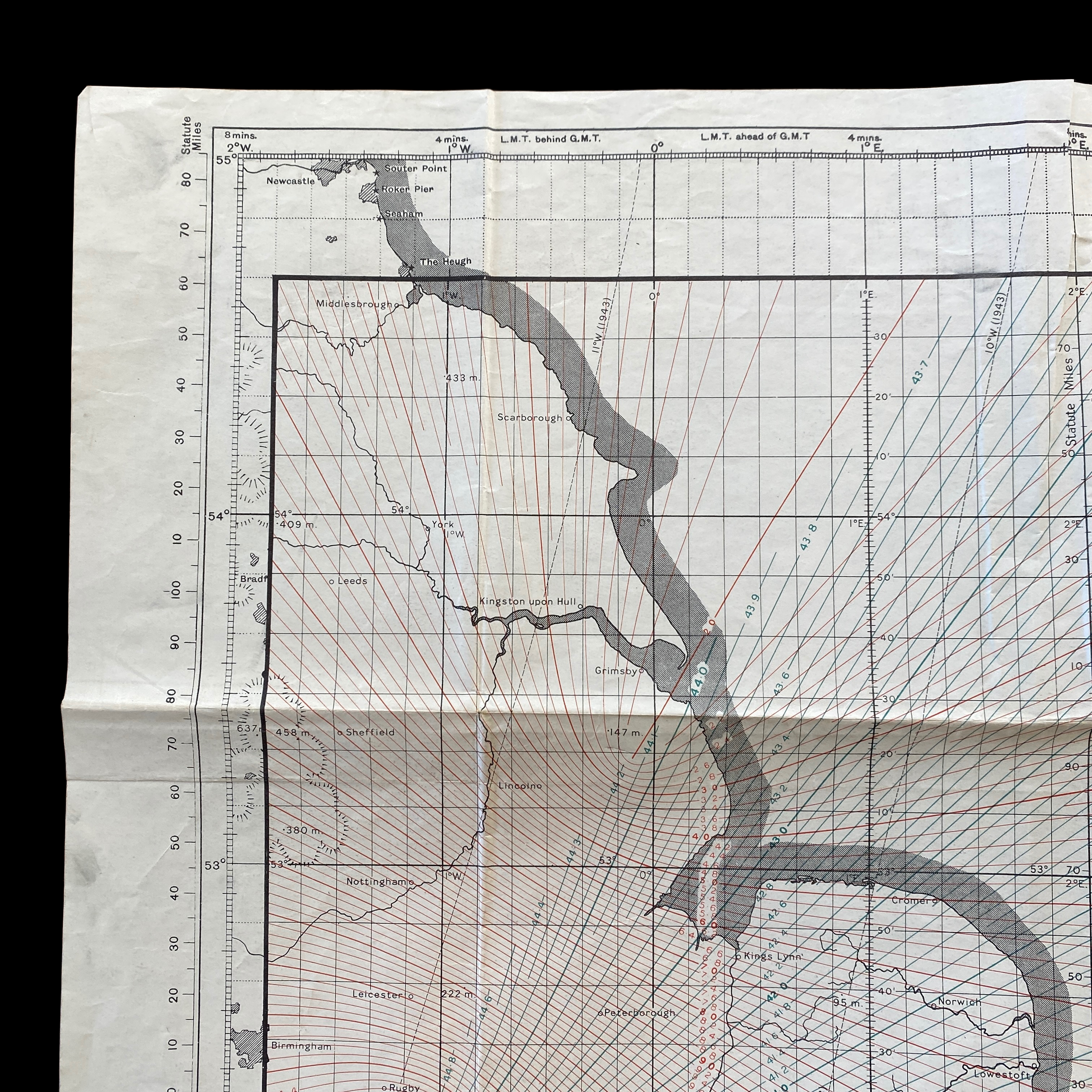
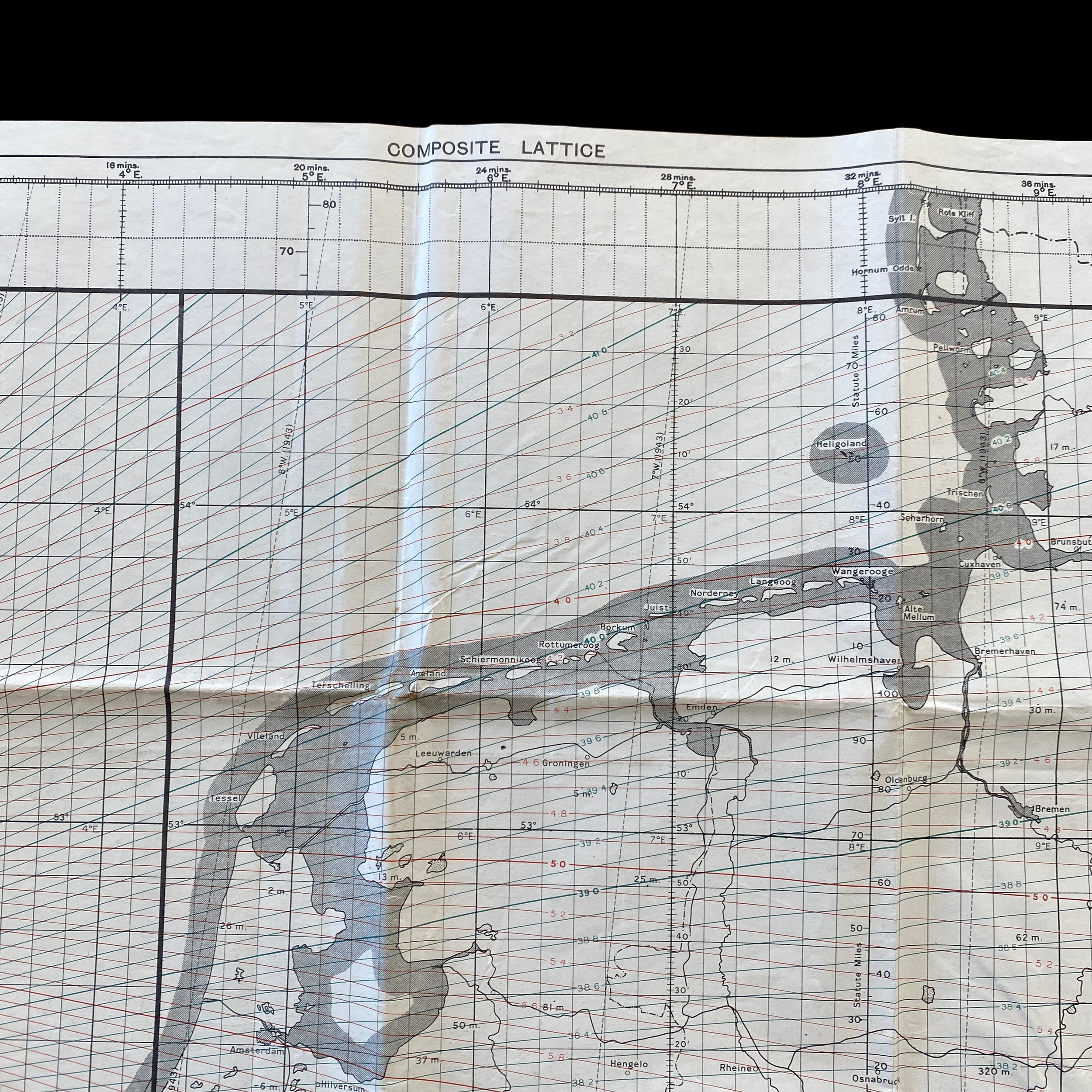
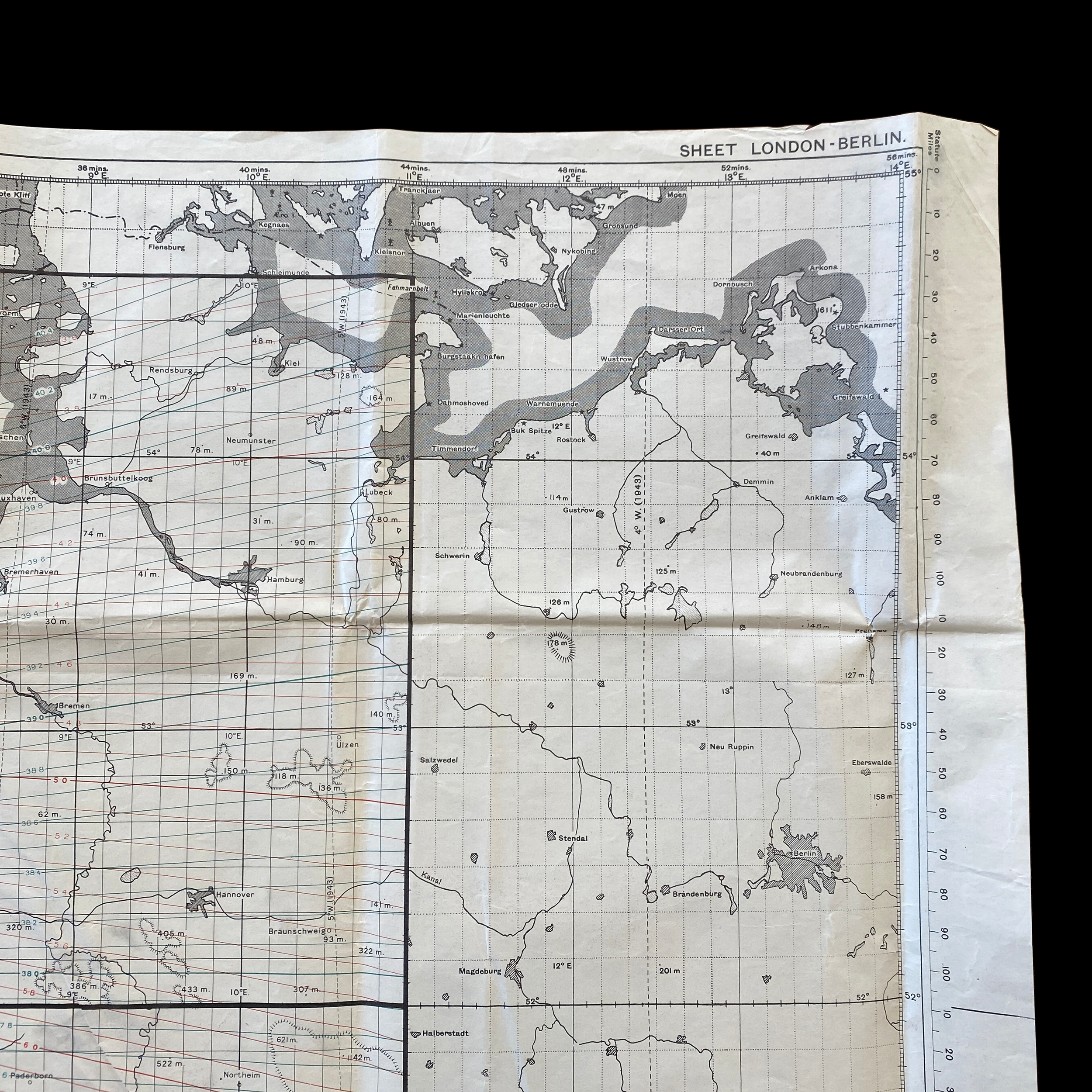
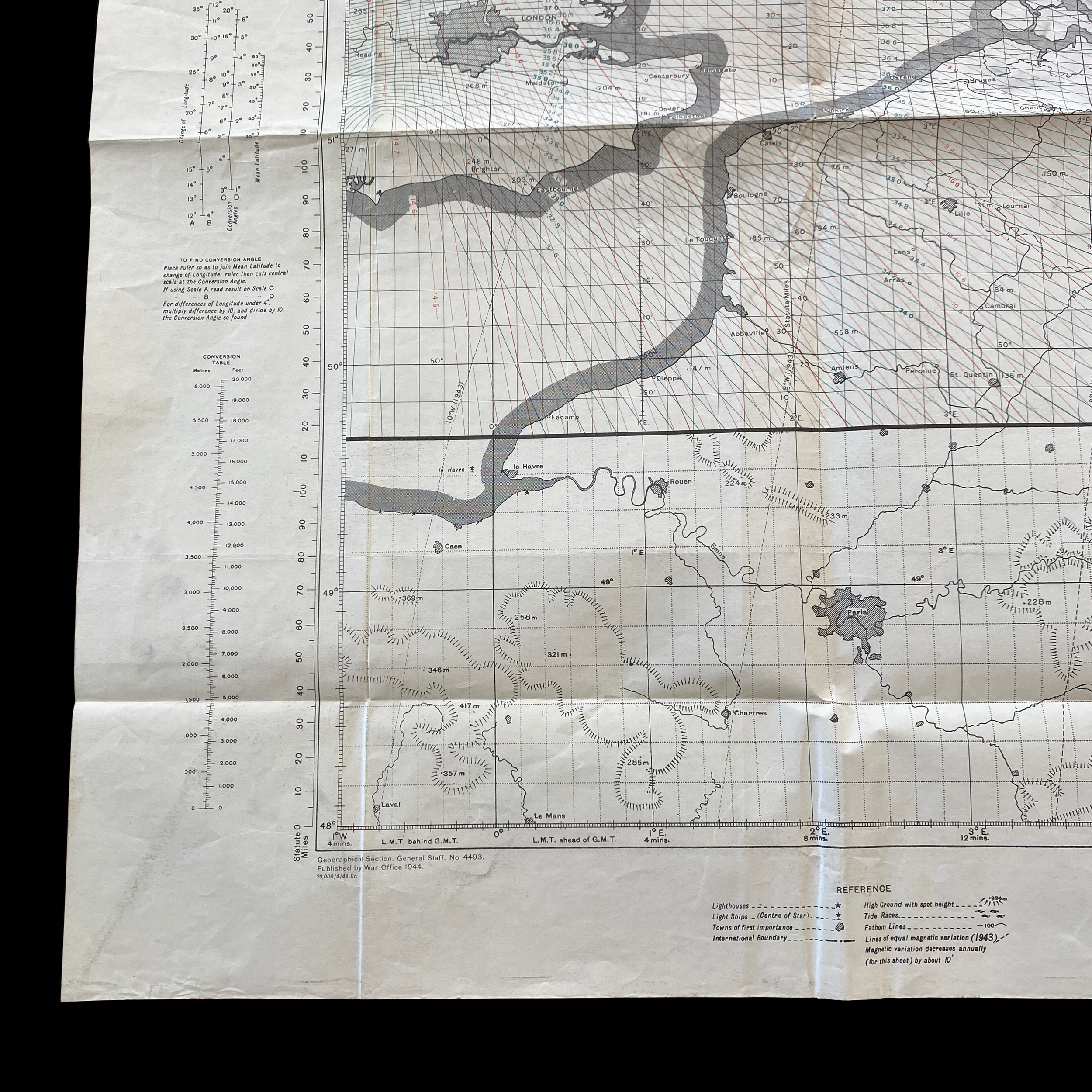
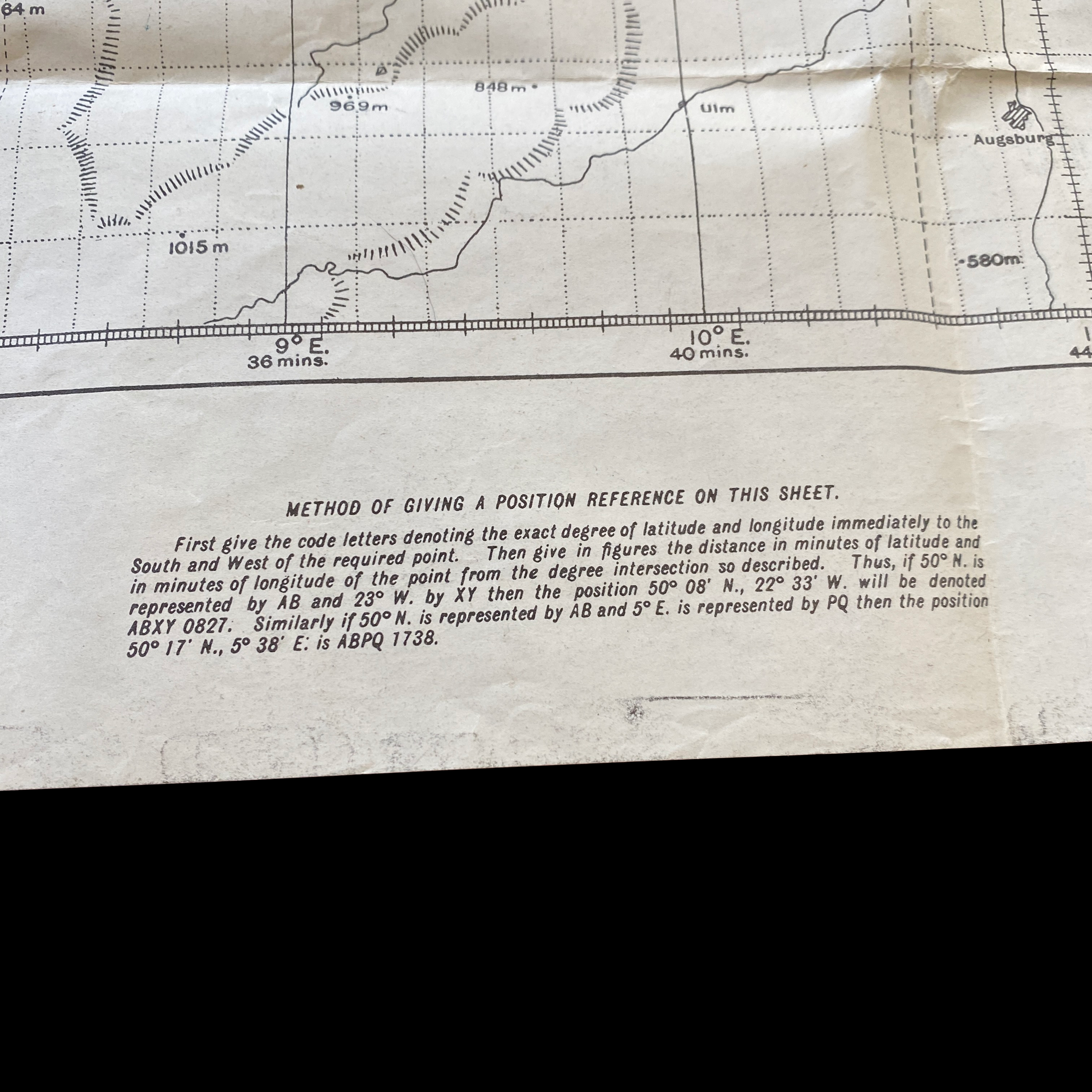












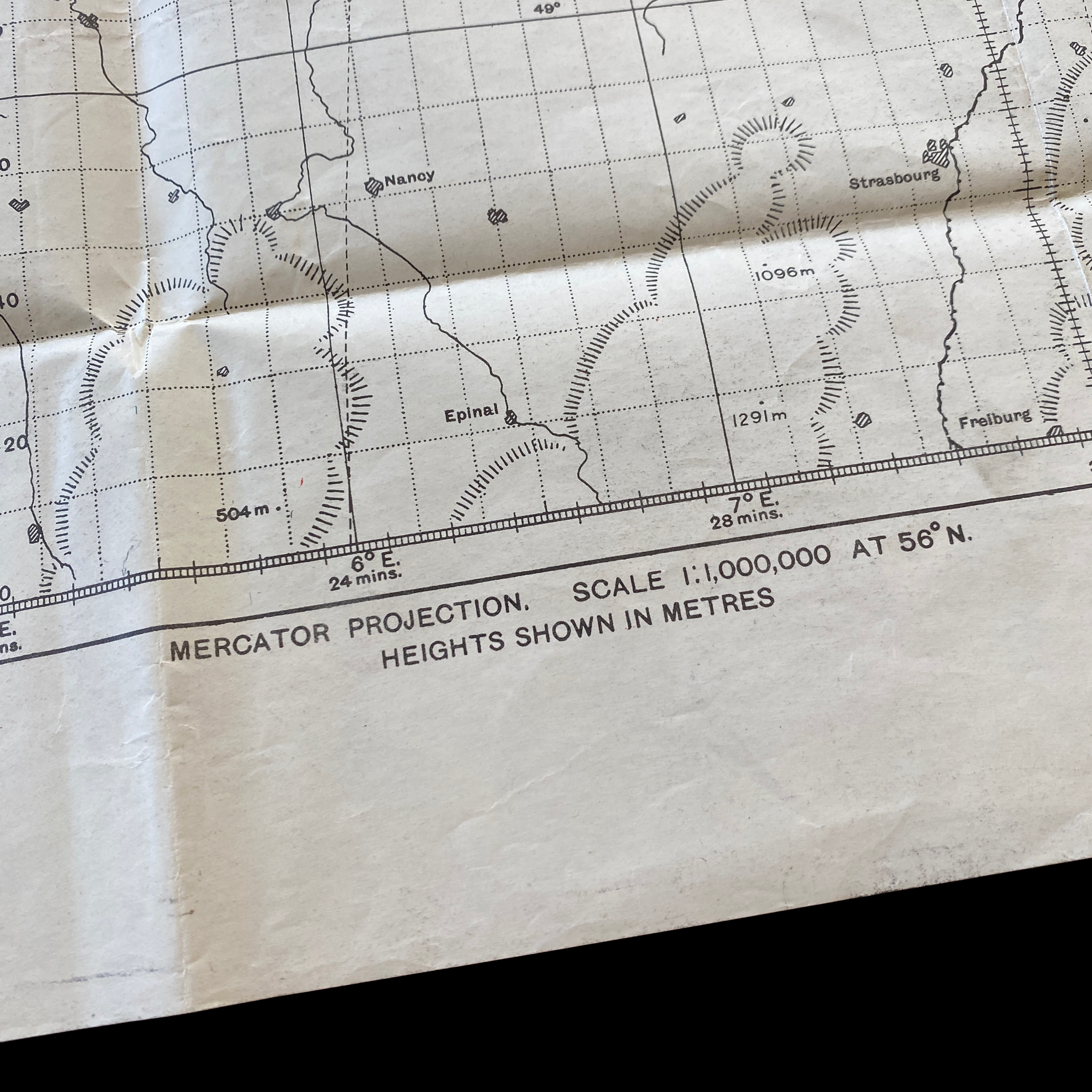
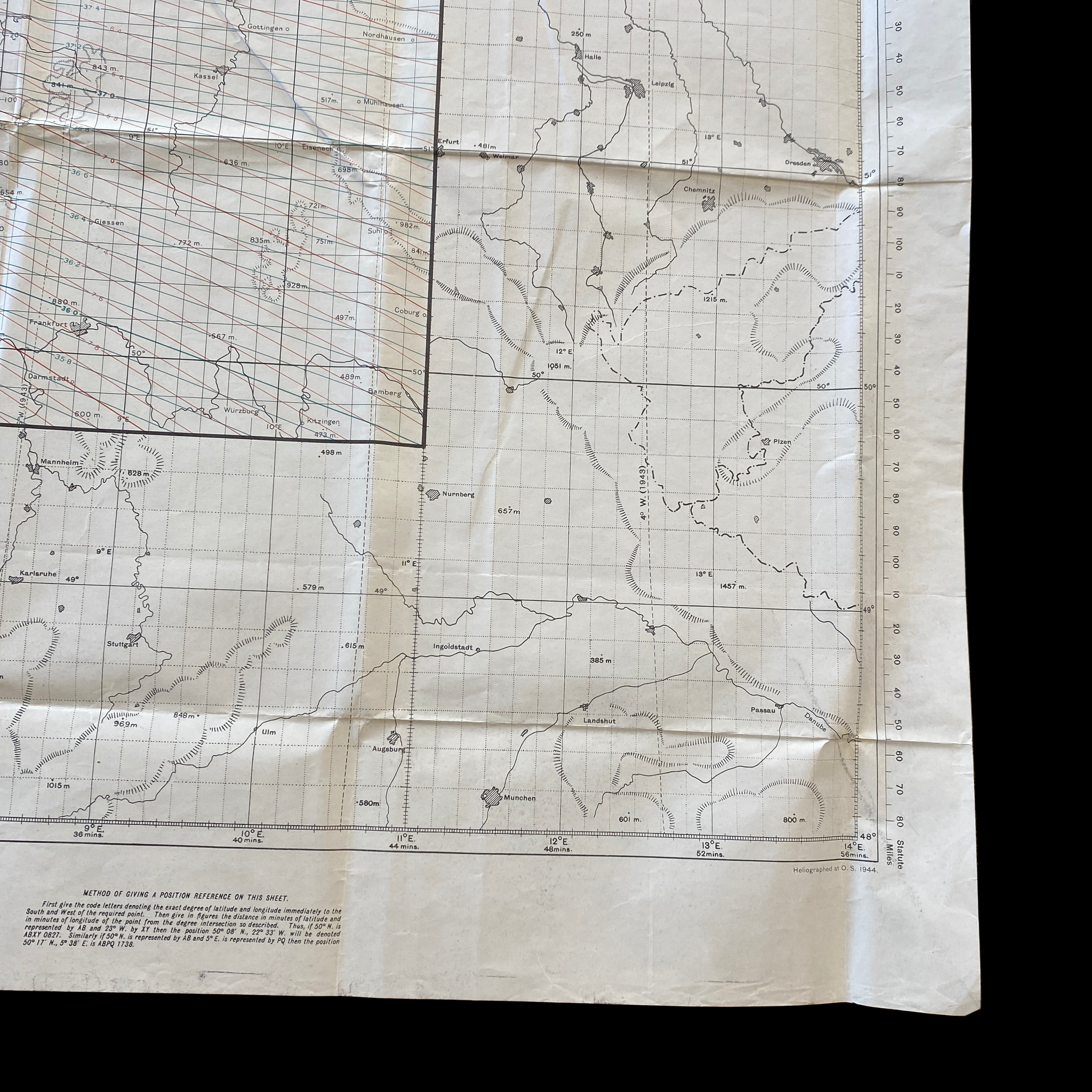











VERY SCARCE! American VIII Bomber Command LONDON-BERLIN H2X-Equipped B-17 1944 WWII Radar Plotting Chart - 100th Bomb Group B-17 Navigator Bomb Raid Mission Map
Comes with C.O.A.
RARE MUSEUM-GRADE BOMBING RAID MISSION MAP FROM “BLOODY HUNDREDTH” 8TH AIR FORCE WWII NAVIGATOR VETERAN.
*This incredibly rare and very scarce large radar plotting series map was used for navigation as well as for pre and post-raid mission bomb group briefings. These would often be utilized by bomber groups to plan for FLAK avoidance to the mission target. This 1944 titled “LONDON - BERLIN” map was used for precise bomber navigation in the ETO and shows some of the 8th Air Force’s most famous targets such as KASSEL, HANNOVER, BREMEN, HAMBURG, BERLIN, KOLN, DUSSELDORF,
American VIII Bomber Command depended extensively on this new technology. Navigators on H2X-equipped B-17s U.S. Army Air Forces used radar charts like this one. H2X, officially known as the AN/APS-15, was an American ground scanning radar system used for blind bombing during World War II. It was a development of the British H2S radar, the first ground mapping radar to be used in combat. It was also known as the "Mickey set" and "BTO" for "bombing through the overcast" radar. H2X differed from the original H2S primarily in its X band 10 GHz operating frequency rather than H2S' S band 3 GHz emissions. This gave H2X higher resolution than H2S, allowing it to provide usable images over large cities which appeared as a single blob on the H2S display. The Royal Air Force (RAF) initially considered using H2X as well, but would instead develop their own X band system, the H2S Mk. III. The RAF system entered service in late 1943, before the first use of H2X in early 1944. The first H2X-equipped B-17's arrived in England in early October 1943, and were first used in combat on 3 November 1943 when the USAAF VIII Bomber Command attacked the port of Wilhelmshaven. Those missions where bombing was done by H2X were called "Pathfinder missions" and the crews were called "Pathfinder crews", after RAF practice of using highly trained Pathfinder crews to go in before the main bomber stream and identify and mark the target with flares. American practice used their Pathfinder crews as lead bombers, with radar equipped aircraft being followed by formations of radar-less bombers, which would all drop their loads when the lead bomber did. The ventral hemispherical radome for the H2X's rotating dish antenna replaced the ball turret on B-17 Flying Fortress Pathfinders, with the electronics cabinets for the "Mickey set" being installed in the radio room just aft of the bomb bay. The system was used extensively by The 91st Bomb Group in 1945 with occasional excellent but generally inconsistent results.
This incredible original WWII Europe Air mission map was by both navigators and pilots on the bombing raids and missions of the 100th Bomb Group (8th Air Force) while serving in the European Theater. This mission map was a bring back of a WWII navigator veteran who served extensively with the 100th Bomb Group (8th Air Force) during WWII. This 8th Air Force veteran brought back ALL of his bombing raid mission maps during his time serving from 1942 till VE-Day in 1945. This veterans collection has been requested to be pieced out to spread the legacy of the airmen of the 8th Air Force that sacrificed their lives for our freedom. A portion of this sale is also being donated to the non-profit Honor Flight Network. The mission of Honor Flight is to transport America’s veterans to Washington, D.C. to visit the memorials dedicated to honoring those who have served and sacrificed for our country.
The 100th Bomb Group was constituted as a heavy bomber group inside the Eighth Air Force, which, at peak strength on D-Day, June 6, 1944, fielded 40 groups of Boeing B-17s and Consolidated B-24s. The 351st Bomb Group flew strategic bombing missions from their base at Polebrook, Northamptonshire from April 1943 to June 1945.
The 100th Bomb Group also known as the "The Bloody Hundredth", because of its reputation for losing a high number of aircraft and crews.
Over the course of 22 months of aerial combat, the aircrews of the 100th had served a deadly apprenticeship as they honed their skills and tactics. In an unemotional analysis of the raw numbers, the Bloody 100th’s wartime losses were not the worst suffered by the Eighth Air Force, though they were in the top three of losses by heavy bomber groups. The official history from the 100th Bomb Group Foundation cites 184 missing aircrew reports on 306 missions. In his memoir An Eighth Air Force Combat Diary, 100th copilot John Clark pointed out that “50% of the Group’s losses occurred in only 3% of its missions.” Like a gambler whose luck has gone cold, when the crews of the 100th had a bad day, they had a very bad day.
More than 26,000 Eighth Air Force personnel sacrificed their lives in service to the war effort. The total number killed or missing in action was slightly more than that suffered by the U.S. Marine Corps, and a little less than half the losses sustained by the entire U.S. Navy. Comparisons such as these do nothing to diminish the contributions of other military branches, but rather point out the gargantuan scale of the Eighth Air Force’s effort. The 100th Bomb Group’s portion of those losses was 785 men killed outright or missing in action and 229 aircraft destroyed or rendered unsuitable for flight.
*Full Mission History of the 100th Bombardment Group (Heavy) during WWII:
Constituted as 100th Bombardment Group (Heavy) on 28 Jan 1942. Activated on 1 Jun 1942. Used B-17’s to prepare for duty overseas. Moved to England, May-Jun 1943, and was assigned to Eighth AF. Operated chiefly as a strategic bombardment organization until the war ended. From Jun 1943 to Jan 1944, concentrated its efforts against airfields in France and naval facilities and industries in France and Germany. Received a DUC for seriously disrupting German fighter plane production with an attack on an aircraft factory at Regensburg on 17 Aug 1943. Bombed airfields, industries, marshaling yards, and missile sites in Western Europe, Jan-May 1944. Operations in this period included participation in the Allied campaign against enemy aircraft factories during Big Week, 20-25 Feb 1944. Completed a series of attacks against Berlin in Mar 1944 and received a DUC for the missions. Beginning in the summer of 1944, oil installations became major targets. In addition to strategic operations, the group engaged in support and interdictory missions, hitting bridges and gun positions in support of the Normandy invasion in Jun 1944; bombing enemy positions at St Lo in Jul and at Brest in Aug and Sep; striking transportation and ground defenses in the drive against the Siegfried Line, Oct-Dec 1944; attacking marshaling yards, defended villages, and communications in the Ardennes sector during the Battle of the Bulge, Dec 1944- Jan 1945; and covering the airborne assault across the Rhine in Mar 1945. Received the French Croix de Guerre with Palm for attacking heavily defended installations in Germany and for dropping supplies to French Forces of the Interior, Jun-Dec 1944. Returned to the US in Dec 1945. inactivated on 21 Dec 1945.